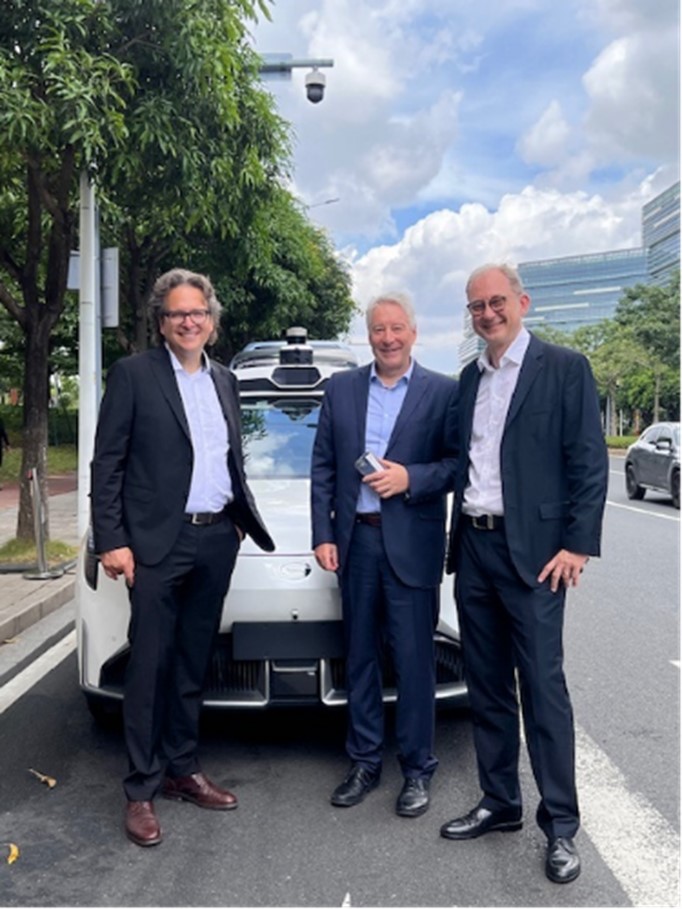
At the end of July, Matthias and Thomas from the Swiss Transit Lab traveled to China to explore new mobility solutions up close. But why China, of all places?
Events
08.08.2024China has established itself as an epicenter of technological innovation, particularly in the field of autonomous driving. The country offers unique insights into advanced mobility solutions that are unrivaled worldwide. Matthias reports "We were greeted by a Robotaxi as soon as we arrived and were able to see for ourselves that the vehicles perform well at motorway speeds, in traffic jams with lane changes, and in solving or avoiding dangerous situations, such as by honking. For instance, when a roadworks worker holding a board jumped onto the carriageway just in front of the car to close a lane."

The highlight of the journey was the autonomous ride in a robotaxi through Guangzhou's heavy traffic. "With WeRide, Pony.ai, and AutoX.ai, we spent several hours traveling in automated vehicles—Robotaxi and Robobus. One journey with the provider WeRide was particularly challenging. In a traditional Chinese old quarter of Guangzhou, we had to avoid cars parked in the wrong place, dodge mopeds coming towards us in the wrong lane, and keep an eye on pedestrians crossing the road. The vehicle handled all situations with aplomb—without any dangerous incidents or abrupt braking," says Matthias.
Thomas adds: "The display showed what the vehicle 'sees' and how the vehicle 'thinks' and plans its route. This provided an additional sense of security, knowing that the vehicle had all situations under control. Of course, the vehicles were monitored by teleoperation throughout the journey, but no recognizable intervention was needed."
And what is your conclusion, Thomas? "Today's vehicles are at a technical level that allows them to maneuver reliably and without difficulty in various demanding road traffic situations. The driving style of these vehicles is so smooth that, after a short time, you forget the driver's seat is empty and that the vehicle is fully automated."